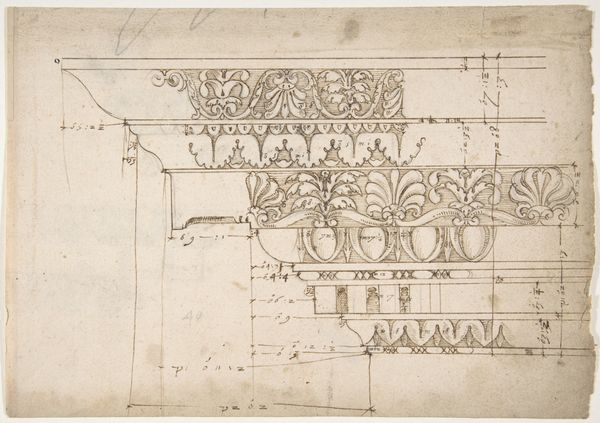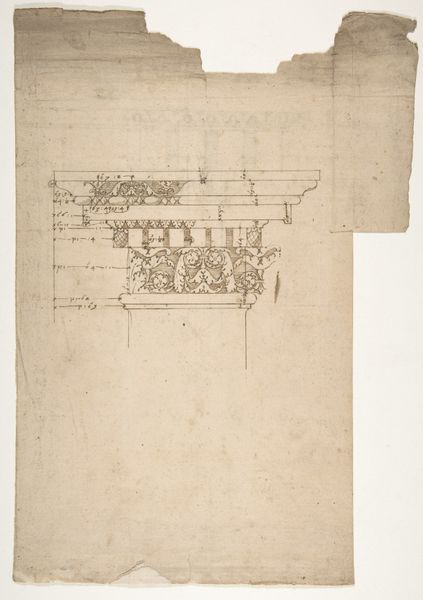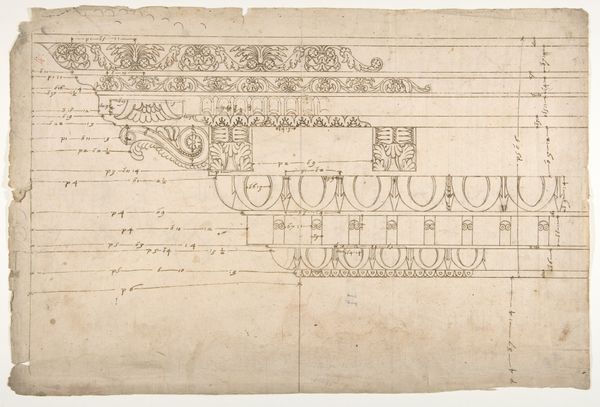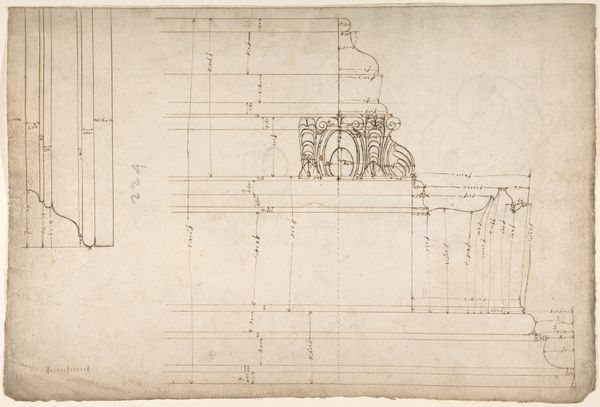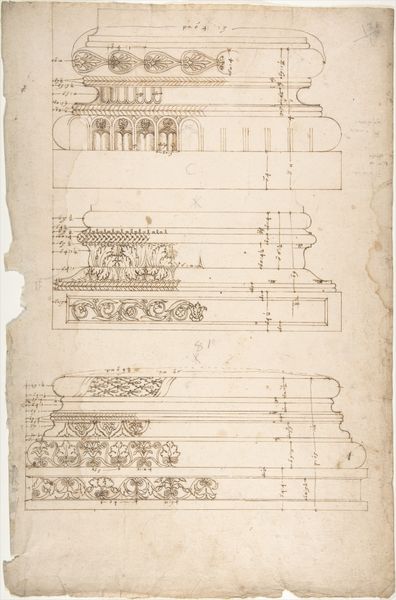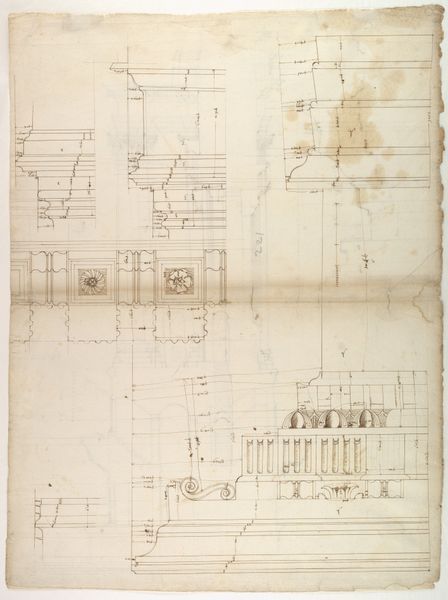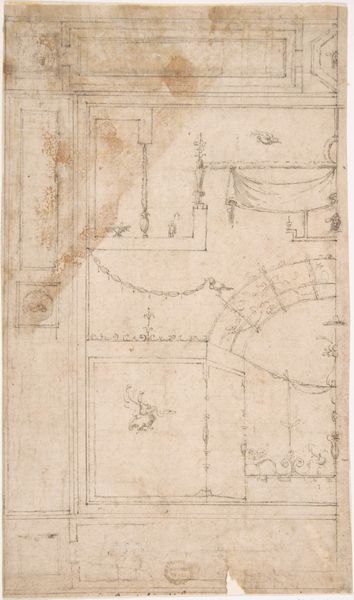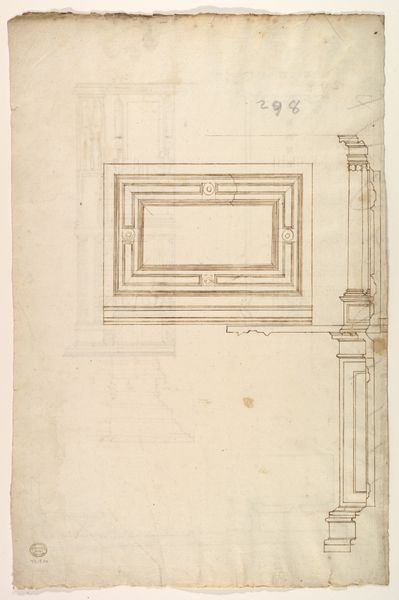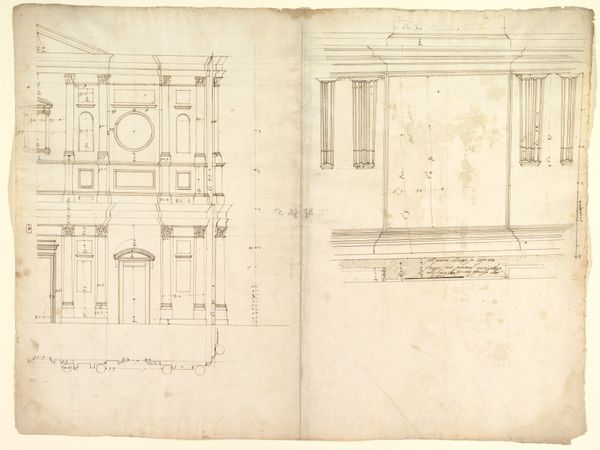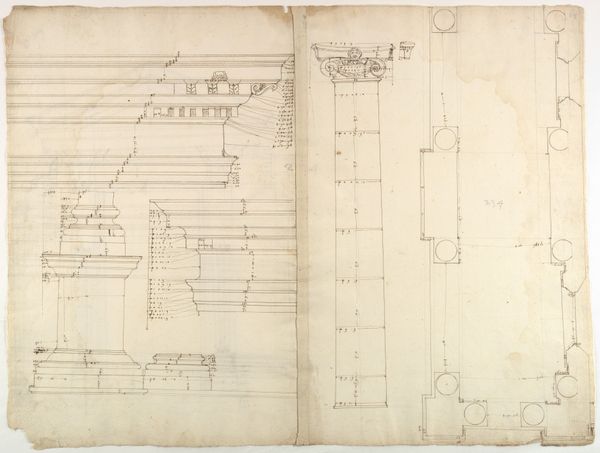
Arch of Septimius Severus, entablature, elevation; attic, base, elevation (recto) Arch of Septimius Severus, archivolt, elevation; impost, elevation; entablature, elevation; column base, elevation; column, plan (verso) 1500 - 1560
0:00
0:00
drawing, etching, pencil, architecture
#
drawing
#
etching
#
etching
#
form
#
11_renaissance
#
pencil
#
arch
#
line
#
architecture
Dimensions: sheet: 16 15/16 x 12 5/8 in. (43 x 32 cm)
Copyright: Public Domain
Curator: I find this architectural study from the Renaissance, rendered in pencil and etching, quite compelling in its austere beauty. This piece, likely created between 1500 and 1560 by an anonymous artist, meticulously depicts sections of the Arch of Septimius Severus. Editor: The precision is astonishing, like an exercise in pure geometrical relationships. And yet, looking at the frayed edges of the paper, the smudges, the thin lines... it feels incredibly fragile, almost as though the arch itself could crumble back into dust. Curator: Indeed. Consider how the artist deploys line weight and hatching to create depth, articulating the interplay of light and shadow across the arch’s entablature. The plan uses both pencil and etching to differentiate features, highlighting form, and emphasizing the solidity of each component. Editor: The choice to represent a Roman monument during the Renaissance is striking. The arch, erected to celebrate military victories, carries layers of Roman imperial iconography—power, conquest, divine favor—and, later, appropriation in the Renaissance, a culture seeking to adopt such grandeur. Note the use of vegetal elements combined with Roman imagery. Curator: The semiotics are layered, certainly. Each precisely drawn volute and carefully measured dimension signifies not only architectural accuracy but also a profound connection to classical ideals of beauty and order. Observe how these geometric forms carry echoes of the power structures from Imperial Rome. Editor: But that act of replication isn't neutral. To study and represent an arch dedicated to military triumph is to engage with, and perhaps legitimize, a specific model of leadership, violence and authority. It is the symbolic appropriation and adaptation by an emergent, centralizing cultural identity. Curator: Undoubtedly, the very act of redrawing speaks to the artist's engagement with, or critical assessment of, these power structures, manifested in stone, adapted onto paper, using drawing techniques to expose underlying geometrical forms. Editor: A fascinating reminder of how every line, every choice of medium, is charged with symbolic potential, turning even architectural documentation into a field of meaning. It seems even the ruins echo meaning. Curator: Absolutely. What starts as structural drawing evolves into a subtle symbolic commentary, illustrating our complex relationship with history and how we adapt the forms that it uses.
Comments
No comments
Be the first to comment and join the conversation on the ultimate creative platform.

